Throughout Phil Mickelson’s 28 years as a pro, swing gurus, stats nerds and armchair psychologists have all taken stabs at the reasons for his brilliance. It has been a losing battle. The Paleo diet, martial-arts classes and amazing short game aren’t everything, and the puzzle of his career is clearly more complex. At age 49, with 44 PGA Tour wins and five Majors, Mickelson has flashes where he plays as well as he ever has. When he won the AT&T Pebble Beach Pro-Am in February, he suddenly was not a fading adornment to the pro-golf scene, but a major factor again. He also became one of the best examples of longevity in tour history. Lately, the “What will Phil do next?” meme has taken on special meaning, shifting from his whimsical off-course antics to stunning on-course possibilities.
What are the reasons for that longevity? And what made him great in the first place? Could it be that his full swing, generally regarded as too long, loose and inconsistent, is an underrated cornerstone of a game built to last? And is there something the rest of us can learn from Phil’s way of going? We put those questions to the three teachers – Butch Harmon, Rick Smith and Dean Reinmuth – who collectively guided him for 27 years. Other respected instructors, including Sean Foley and the legendary Bob Toski, gave their thoughts, too.
A consensus emerged on several aspects of Phil’s full swing, as well as the intangibles of his outlook – how he “sees the game”, as Foley puts it. They have re-energised Mickelson as he ventures further into the dicey zone of middle age. We left diet and physical conditioning out of the equation, as Phil’s habits in those areas are constantly in flux. We’re interested in what happens when Phil is on the golf course.
The Swing: “Long and free, go on a spree”
 Dean Reinmuth recalls his first lessons with Mickelson in 1984, when Phil was just shy of his 14th birthday. “I hadn’t seen flexibility in a swing like that before,” he says. “At the top, the shaft of Phil’s club would sometimes hit him in the neck, and that’s with his lead arm perfectly straight. His arm joints were so loose, he could buckle his arms backward at the elbows, as some young gymnasts can do. It created some obvious challenges with control, but I was really hesitant about changing the basics of it. He could hit the ball so high and far, and his timing was so good. What you see today, I was seeing 35 years ago.”
Dean Reinmuth recalls his first lessons with Mickelson in 1984, when Phil was just shy of his 14th birthday. “I hadn’t seen flexibility in a swing like that before,” he says. “At the top, the shaft of Phil’s club would sometimes hit him in the neck, and that’s with his lead arm perfectly straight. His arm joints were so loose, he could buckle his arms backward at the elbows, as some young gymnasts can do. It created some obvious challenges with control, but I was really hesitant about changing the basics of it. He could hit the ball so high and far, and his timing was so good. What you see today, I was seeing 35 years ago.”
The career-long swing template was in place – lengthy and loose, sometimes errant, but a gift. He won three NCAA Championships, one US Amateur and nine times on tour with Reinmuth until parting ways in 1996. Mickelson chose not to have a primary instructor until Rick Smith signed on from 2001 through 2006.
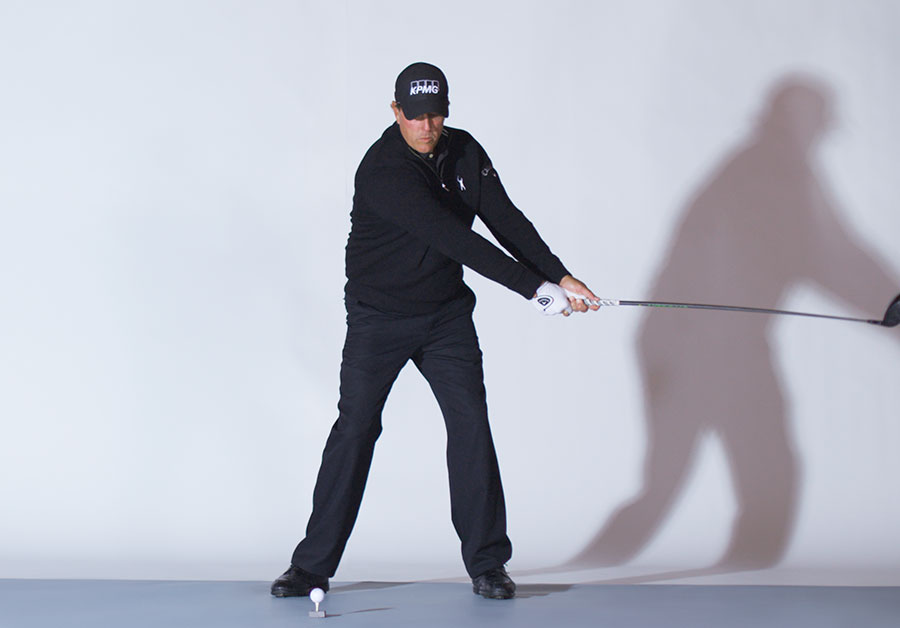 “I didn’t want to change the length of Phil’s swing, either,” Smith says. “We worked on adding control, by posting him up more on his front leg, which helped him ‘cover’ the ball more through impact. That really helped his iron game. Don’t forget, his swing is long with the irons, too. But that long swing, even with the driver, is an asset. It gives him time to gather at the top, to transition smoothly. The violence that comes with shortened swings and their sudden changes of direction is one way players get hurt. Phil’s long swing is body-friendly and a reason he’s playing well today.”
“I didn’t want to change the length of Phil’s swing, either,” Smith says. “We worked on adding control, by posting him up more on his front leg, which helped him ‘cover’ the ball more through impact. That really helped his iron game. Don’t forget, his swing is long with the irons, too. But that long swing, even with the driver, is an asset. It gives him time to gather at the top, to transition smoothly. The violence that comes with shortened swings and their sudden changes of direction is one way players get hurt. Phil’s long swing is body-friendly and a reason he’s playing well today.”
Mickelson won three of his five Major championships on Smith’s watch, but by early 2007 he was 36 and thinking more long term. Always a natural athlete, Mickelson had begun his forays into dedicated fitness training – including martial arts – and left Smith for Butch Harmon.
 “Phil could do a split while sitting, touching his chest to the ground,” Harmon says. “Just ridiculous flexibility and natural strength. As a teacher you close your eyes and think, Man, what I could do with talent like that.” Harmon was well aware of Phil’s physical gifts and sought to exploit them by changing the character of that long swing.
“Phil could do a split while sitting, touching his chest to the ground,” Harmon says. “Just ridiculous flexibility and natural strength. As a teacher you close your eyes and think, Man, what I could do with talent like that.” Harmon was well aware of Phil’s physical gifts and sought to exploit them by changing the character of that long swing.
A wider backswing with a firmer lead arm and sturdier leg action was designed to produce more accuracy. Remember, this was just after Phil’s nightmare struggle with the driver in the final round of the 2006 US Open at Winged Foot, in which he hit only two of 14 fairways, including a massive block to the left on the final hole – always Phil’s worst tendency. He double-bogeyed the 18th, lost that US Open by a shot and was desperate for a swing overhaul that would address the flaw.
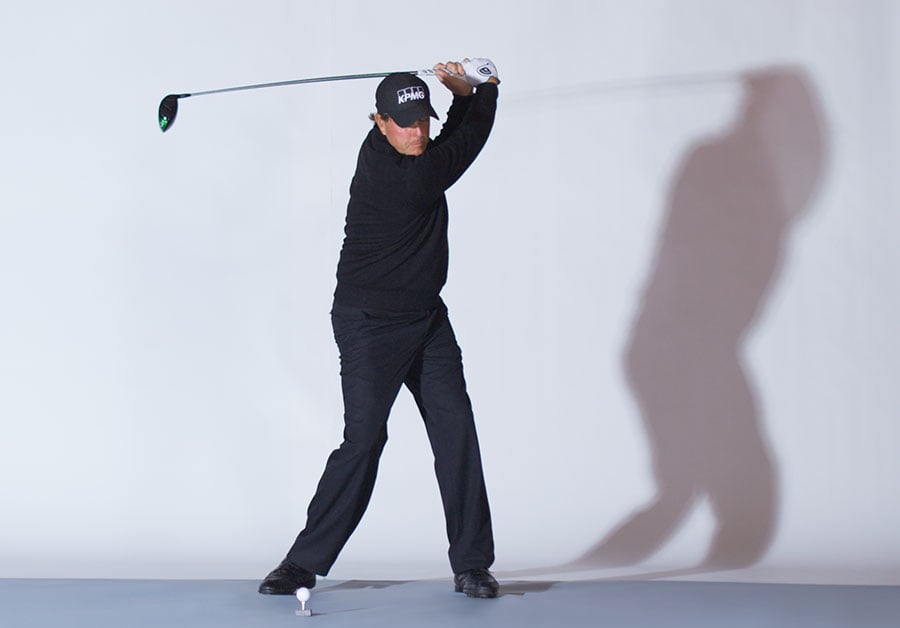 Phil won 12 tour events, including two Majors, with Harmon. But Butch recallsa moment that signalled Phil wasn’t always on board. “One day I had Phil swinging to parallel at the top and no farther,” he says. “Phil said, ‘I like what we’re doing, but I think I’m giving up some distance. I just know I won’t be able to stay with this.’ Phil moved on some time later, which is fine. Players often get to a point where they want to start hearing different things.”
Phil won 12 tour events, including two Majors, with Harmon. But Butch recallsa moment that signalled Phil wasn’t always on board. “One day I had Phil swinging to parallel at the top and no farther,” he says. “Phil said, ‘I like what we’re doing, but I think I’m giving up some distance. I just know I won’t be able to stay with this.’ Phil moved on some time later, which is fine. Players often get to a point where they want to start hearing different things.”
Mickelson’s swing today is longer and looser again, his driver speed on the practice tee faster than 120 miles per hour. Says Bob Toski, at age 92 golf’s most venerable teaching voice: “I’ve always said: long and free, go on a spree; short and fast, fall on your ass. Phil is very good at allowing his swing to gather, then change direction from the top. He’s never in a hurry. That’s the way you play golf forever.”
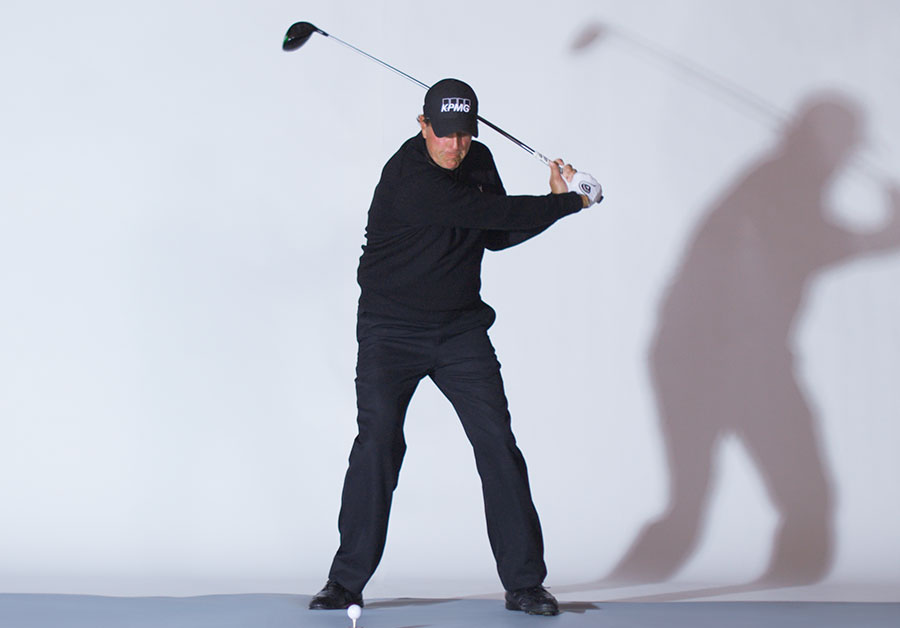
School your hands, not your body
Mickelson’s touch around the greens is undeniable, but it’s the contribution of his hands to his full swing that increasingly is seen as a key to his longevity. The slinging character of his release might not convey efficiency, but it reveals power and finesse. “We all remember Phil using two drivers – one suited for a fade and the other for a draw, when he won the 2006 Masters,” Smith says. “When he’s running good, his control of the clubface at high swing speeds is incredible.”
Smith believes all golfers can improve their full swings – and their longevity – just by focusing on their hand movements instead of the larger swing components. “The hands not only control the clubface, they help get the club on plane,” he says. “Phil has smart hands, a way of making them fit the motion of the shoulders, arms and torso.”
 How did Phil develop the knack? Reinmuth recalls contests with the teenage Phil in which they’d hit flop shots – not just with wedges, but with every club down to a 3-iron. “Big, full swings,” Reinmuth says. “That’s how he developed sensitivity and clubface awareness. My most striking memory is how Phil’s hands never got heavily callused, even after hitting so many balls – he’d wear clubs out. He instinctively knew to keep his grip pressure light. His hands are as soft as the leather on a fresh glove.”
How did Phil develop the knack? Reinmuth recalls contests with the teenage Phil in which they’d hit flop shots – not just with wedges, but with every club down to a 3-iron. “Big, full swings,” Reinmuth says. “That’s how he developed sensitivity and clubface awareness. My most striking memory is how Phil’s hands never got heavily callused, even after hitting so many balls – he’d wear clubs out. He instinctively knew to keep his grip pressure light. His hands are as soft as the leather on a fresh glove.”
But what of the instances where his hands failed him? Winged Foot wasn’t an isloated incident, Reinmuth says: “When you have extreme angles in your swing at Phil’s speed levels, there’s always going to be a trade-off [with dependability].”
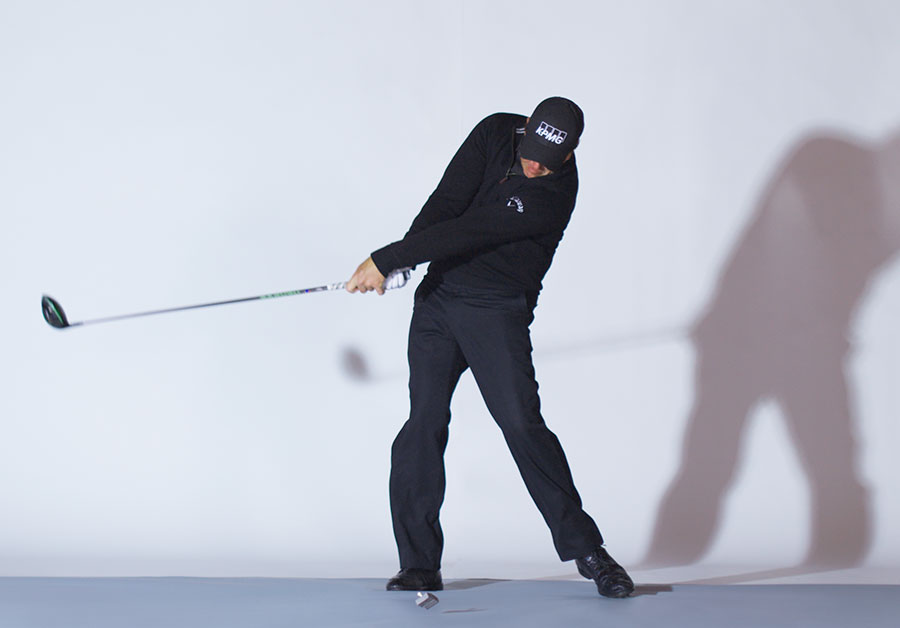 Smith points to the flipping action of Phil’s left hand – the bottom hand on his grip – through impact as a consequence of a swing path and angle that demands aggressive action to square the face. “It’s part of his DNA, and we’ll always see that flipping action to some degree,” Smith says.
Smith points to the flipping action of Phil’s left hand – the bottom hand on his grip – through impact as a consequence of a swing path and angle that demands aggressive action to square the face. “It’s part of his DNA, and we’ll always see that flipping action to some degree,” Smith says.
Play around your signatures
Unconventional swing traits can be strengths and a source of long-term good, provided they work in concert with other movements. Witness Jim Furyk, a 17-time winner on the PGA Tour, including the 2003 US Open. Like Furyk, Phil is loaded with distinctive moves, including the long swing, the slinging type of release and the loose lower body.
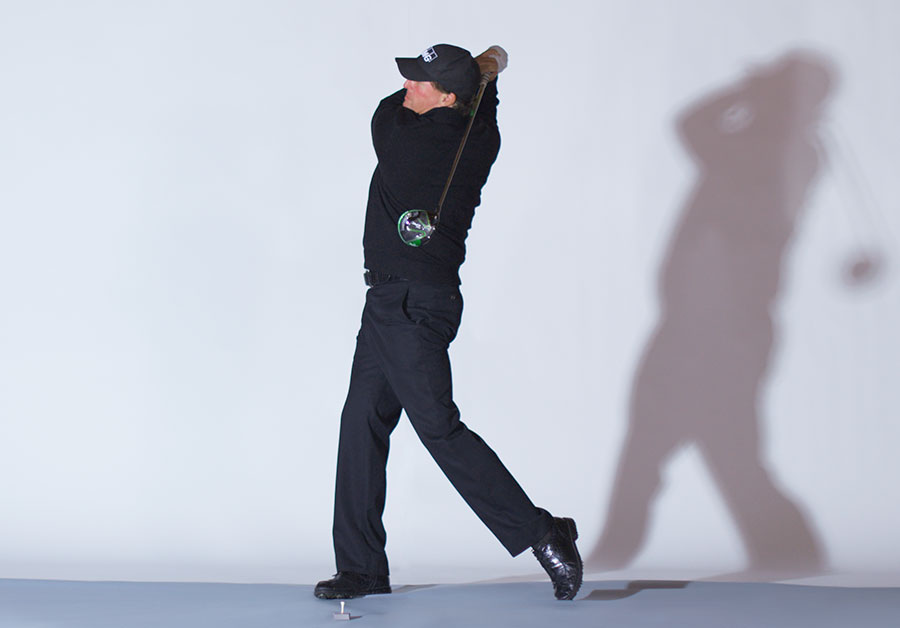 “I especially like the slack in his lower body,” Sean Foley says. “There are teachers who don’t care for slack anywhere, but I think it really matches up well with the way he pulls down with his dominant right arm from the top. There’s so little torque and stress on his spine. It’s one reason he’s avoided injury.”
“I especially like the slack in his lower body,” Sean Foley says. “There are teachers who don’t care for slack anywhere, but I think it really matches up well with the way he pulls down with his dominant right arm from the top. There’s so little torque and stress on his spine. It’s one reason he’s avoided injury.”
Says Smith: “In the early years, Phil allowed his right heel to rise to accommodate that huge turn. That went away for a time, but I’m not sure that was the real Phil. His heel now is coming way up again. He’s clearly not fighting his natural tendency.”
Toski loves the strength and sensitivity of Mickelson’s hands – he likens them to Byron Nelson’s. As a teacher who favours attention on the small muscles, Toski admires the fullness of Phil’s release, but that signature can be modified: “A little more firmness in his gloved hand would stabilise the blow and stop that bare hand from taking over,” he says. “I’d also like to see him think of his driver swing as a larger version of his short-iron swing.”
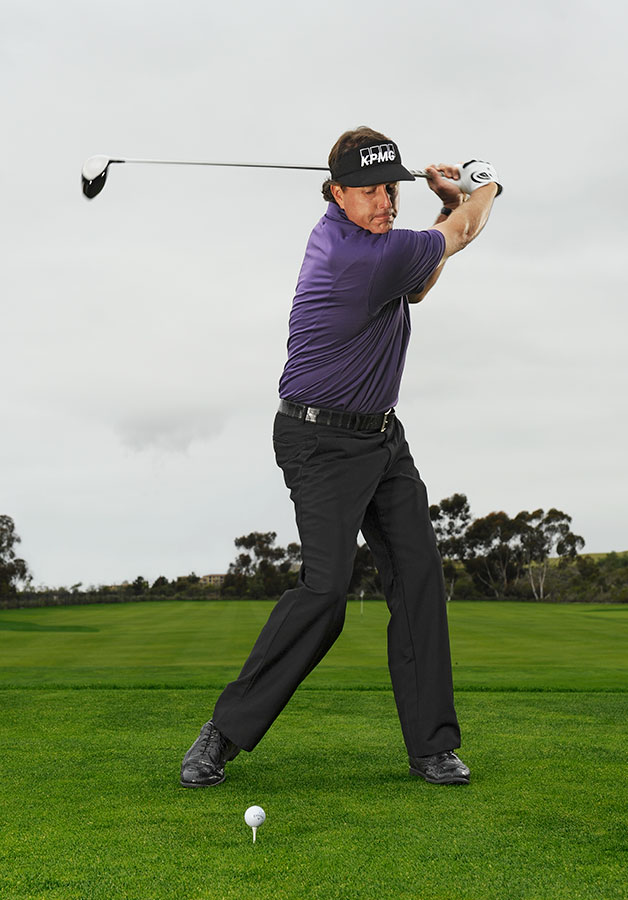
Work ethic matters
Few know how hard Phil works on his swing, but inside the thongs-wearing, southern California pretty boy is a Pennsylvania steel-mill worker trying to get out. Harmon says there were days at his golf school outside Las Vegas when the visiting Mickelson would practise from early morning through late afternoon for days on end. “He hit thousands of balls,” Harmon says. “We know Phil loves the game, but he also put in the hours. A lot of it happened away from the tour, when people thought he was goofing off. It’s just not the case. He paid the price.”
Reinmuth says that when Mickelson was a teen, and due to spend a week on the family boat on Shasta Lake, he privately stressed about missing practice time. “Phil took a club with him and made a lot of swings,” he says. “He always came back as though he never missed a day.”
Shortly after Mickelson graduated from Arizona State University, this writer once looked in Mickelson’s bag of stray clubs. There were two Ping L-wedges, the kind he played back in the day, that had the faces worn completely smooth from countless balls hit. As Phil approaches age 50, experience and muscle memory make that type of ball-beating far less necessary.
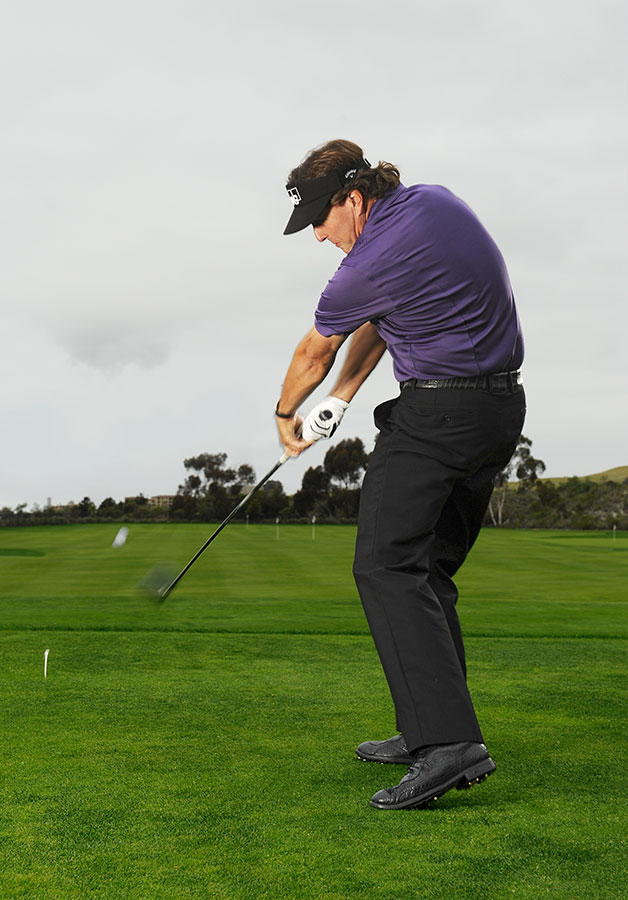
Glory is one swing away
Smith loves to recount the 2012 Masters, in which Mickelson opened with a 74, spraying the ball everywhere. “Phil was seven shots back, and after the round the media wanted to know what had happened,” he says. “Phil said, ‘Not a great ball-striking round, but I’m so close.’ The next day Phil shot 68, then lit it up with a 66 on Saturday. He didn’t win that year but missed a playoff by two shots. He always feels like he’s just on the verge of catching fire. There’s a lot of power in that kind of optimism.”
Reinmuth recalls Mickelson’s first tour win, the 1991 Northern Telecom Open while Phil was still an amateur. “He was leading by one, then made triple-bogey on the 14th hole after hitting his drive a mile off line,” he says. “It had to be traumatic, but he always had a way of looking at huge mistakes as simple miscues, nothing to worry about. He birdied two of the last three holes and won by a shot.”
Harmon says that mistakes such as the seemingly tragic loss at Winged Foot can be career-wreckers for some players. “One reason Phil is still dangerous is that he has the shortest memory of anyone in golf history,” Harmon says. “He has a way of moving on that is unique. It’s true off the course as well. That self-effacing style, the trash-talking that never leaves a permanent mark, keeps a person young.”
Says Foley: “I have no doubt Phil will win Major championships in his 50s. I’ve observed him up close while walking with my players at least 60 rounds. His strength and skill, the mobility at his age, the way he loves competition, the fact he’s loved by fans so much that every round is a home game for him, you can pretty much bet that his greatest moment is still ahead of him.”
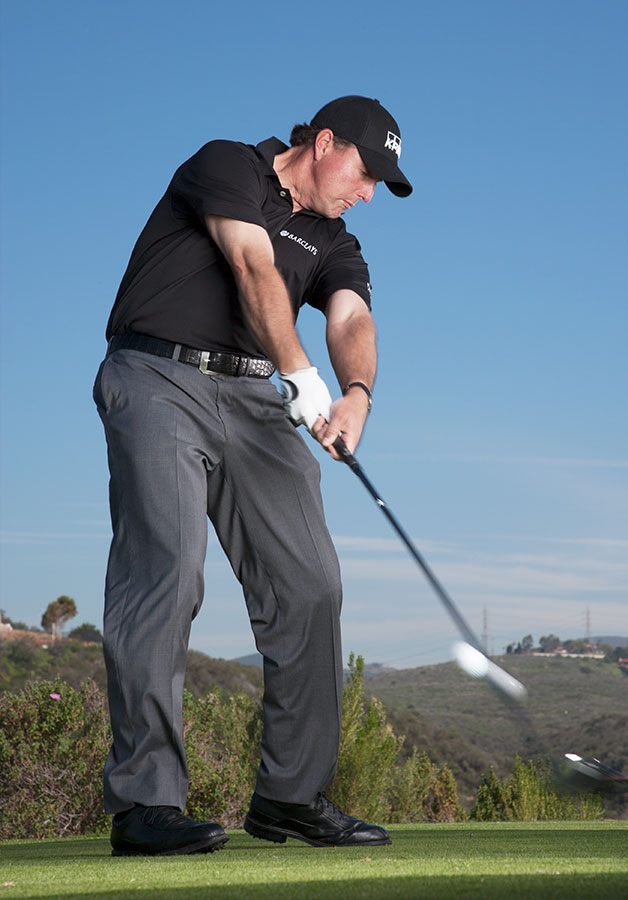 The Takeaways
The Takeaways
What to copy from Phil:
For all the criticism Mickelson’s swing has received over the years for being too reliant on extraordinary hand-eye co-ordination to be useful for the average golfer, some top instructors think there are things he does that would benefit everyday players. —gy
Grip the club lightly
Phil has the sense that one could yank the club out of his hands with a firm tug. A sensitive hold will give you mobility in your wrists, and keep your arms and shoulders loose. You’ll square the clubface more easily, and you can play for decades with less risk of shoulder, elbow and wrist injuries, says Dean Reinmuth.
Take your time
Phil’s extra-long backswing isn’t for everyone, but the pace at which he gets to the top is a model for us all, says Bob Toski. Swing back in a drowsy way, and your downswing will sync up nicely. “The golf ball is in no hurry to be hit,” Toski says.
Don’t resist
Allow the knee of your front leg to move away from the target and the heel to rise. Also let the hips turn as far as they’ll go without causing you to sway excessively, or cause your weight to drift to the outside of your back foot. Freedom is a source of Phil’s timing, speed and power and will help your swing’s longevity, too, says Rick Smith.
Swing through the ball
Only after impact do Phil’s arms straighten, a sign he tears viciously through the ball. Make the club reach maximum speed after the ball is gone. Build an accelerating downswing like Phil,so that the club’s whoosh sound occurs through the impact zone, Butch Harmon says.
Read on for more on Phil Mickelson

